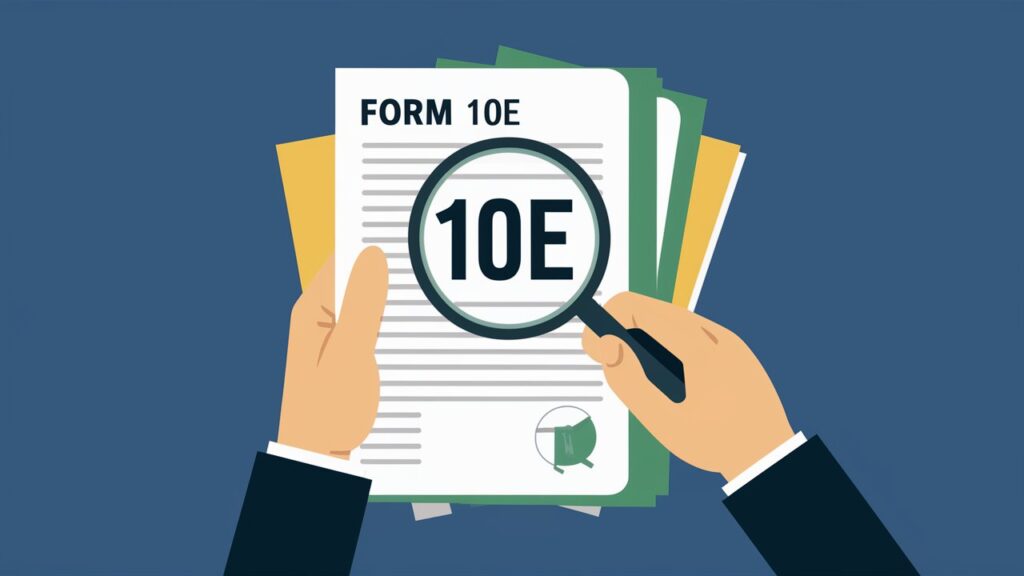Table of Contents
ToggleUnderstanding Section 89 of Income Tax: A Comprehensive Guide

What is Section 89 of Income Tax?
Section 89 of Income Tax provides relief to individuals who receive a lump sum payment in the form of salary arrears, advance salary, gratuity, or any other sum that pertains to earlier years. This section is designed to prevent the undue tax burden that would arise if such payments were taxed entirely in the year they are received. Instead, Section 89 allows the income to be spread over the relevant years, thereby ensuring a fair tax computation.
For instance, if Faiz receives arrears for the past three years, Section 89 of Income Tax allows him to calculate the tax as if the income was distributed across those three years. This method often results in a lower tax liability compared to computing it all in the current year.
How Does Section 89 of Income Tax Work?
To understand how Section 89 of Income Tax works, let’s break down the steps involved in claiming the relief:
- Calculate the tax on total income, including the arrears, for the year of receipt.
- Calculate the tax on total income, excluding the arrears, for the same year.
- Compute the difference between the two amounts.
- Calculate the tax on total income for the past years to which the arrears pertain, both including and excluding the arrears.
- Find the difference for each of those years.
- Subtract the total difference for the past years from the difference calculated for the current year.
The resultant figure is the amount of relief under Section 89 of Income Tax.
Example: Faiz Claims Relief Under Section 89 of Income Tax
To illustrate the process, let’s consider Faiz, an employee who receives arrears of salary amounting to ₹4,50,000 for the past three years. Here’s how Faiz would proceed:
- Calculate tax for the current year including arrears: Faiz’s total income including arrears is ₹14,92,000, and the tax computed is ₹2,70,504.
- Calculate tax for the current year excluding arrears: Faiz’s total income excluding arrears is ₹10,42,000, and the tax computed is ₹1,30,104.
- Difference for the current year: The difference in tax due to arrears for the current year is ₹2,70,504 – ₹1,30,104 = ₹1,40,400.
Next, Faiz calculates the tax for the years to which the arrears pertain:
Tax computation for past years: Suppose the arrears pertain to three previous years, the tax difference due to arrears in each of those years is calculated similarly. Let’s assume the total difference is ₹1,00,850.
Compute the final relief: The relief under Section 89 of Income Tax is the difference between the current year’s difference and the past years’ difference, i.e., ₹1,40,400 – ₹1,00,850 = ₹39,550.
Thus, the relief Faiz can claim is ₹39,550, reducing his tax liability to ₹2,30,954 from ₹2,70,504.

Filing Form 10E for Section 89 of Income Tax:
To claim the relief under Section 89 of Income Tax, Faiz must file Form 10E online before submitting his income tax return. This form provides the necessary details of the arrears and the years to which they relate. The steps to file Form 10E are as follows:
- Log in to the Income Tax e-filing portal: Faiz logs into the official portal using his PAN and password.
- Navigate to ‘e-File’ and select ‘Income Tax Forms’: He then selects ‘File Income Tax Forms’ and chooses Form 10E.
- Fill in the required details: Faiz enters the details of the arrears, including the financial years they pertain to, and the calculations as discussed above.
- Save and submit: After filling out the form, Faiz saves the draft and submits it online.
By filing Form 10E, Faiz ensures that his claim for relief under Section 89 of Income Tax is processed smoothly, and he avoids any penalties or issues with the Income Tax Department.
Importance of Section 89 of Income Tax:
Section 89 of Income Tax is a crucial mechanism within the Indian tax system, designed to ensure that taxpayers who receive lump sum payments, such as arrears, gratuity, or advances, are not unduly penalized by a higher tax rate. When a taxpayer receives a significant sum in a single year, it could push them into a higher tax bracket, resulting in an unfairly high tax liability. Section 89 mitigates this by allowing the income to be spread over the years it actually pertains to, ensuring a more equitable tax computation. This provision is especially significant for salaried employees, as their income is often subject to fluctuations due to delays in payments or one-time settlements.
For example, Faiz, an employee who received ₹4,50,000 in arrears for the last three years, benefited greatly from Section 89 of Income Tax. Without this provision, Faiz would have had to include the entire arrears in his income for the current year, potentially resulting in a substantial increase in his tax liability due to being pushed into a higher tax bracket. Instead, by distributing the arrears across the years they were earned, Faiz’s tax was calculated more fairly, reflecting the actual earning periods. This approach not only reduced his immediate tax liability but also aligned his tax payments more closely with his income over the respective years. Thus, Section 89 plays a vital role in maintaining tax equity and fairness, ensuring that taxpayers are taxed based on their true earning patterns rather than arbitrary lump sum receipts.
By filing Form 10E, Faiz ensured compliance with the tax laws and properly availed the relief provided under Section 89 of Income Tax. This form, which must be submitted online before filing the income tax return, documents the details of the arrears and the years they relate to, facilitating the tax relief process. Faiz’s experience underscores the importance of Section 89 for employees who might otherwise face significant financial strain due to lump sum payments. This provision helps in spreading the tax burden more evenly, promoting a fairer tax system and providing necessary relief to those who receive irregular income. Ultimately, Section 89 of Income Tax not only aids in reducing immediate tax liabilities but also ensures a just taxation process that mirrors the taxpayers’ actual financial circumstances over time, thereby fostering a more balanced and equitable taxation environment.

Conclusion:
Section 89 of Income Tax is an essential provision for salaried employees receiving arrears or other lump sum payments. By spreading the income across the years it pertains to, it ensures a fair tax computation and prevents undue tax burden. The process, though detailed, is straightforward with the help of Form 10E. As illustrated through Faiz’s example, understanding and utilizing Section 89 of Income Tax can lead to significant tax savings and compliance with tax regulations.
By ensuring proper filing and computation, taxpayers like Faiz can benefit from the relief provided under Section 89 of Income Tax, making their tax experience smoother and more equitable.
FAQ on Section 89 of Income Tax:
Q1: What is Section 89 of Income Tax?
A1: Section 89 of Income Tax provides tax relief to individuals who receive arrears or advances of salary, gratuity, or other lump sum payments. This provision ensures that such lump sum payments, which pertain to earlier years, are taxed as if they were spread over those years, thereby avoiding a higher tax burden in the year of receipt.
Q2: Who can benefit from Section 89 of Income Tax?
A2: Salaried employees who receive arrears, advance salary, gratuity, or similar lump sum payments can benefit from Section 89. This includes individuals who have received income that should have been paid in previous years but was paid in a lump sum in the current year.
Q3: How is the relief under Section 89 calculated?
A3: The relief is calculated by comparing the tax liability with and without the arrears for the current year and the years to which the arrears pertain. Specifically:
- Calculate the tax on total income including arrears for the current year.
- Calculate the tax on total income excluding arrears for the current year.
- Compute the difference between these two amounts.
- Calculate the tax on total income for the past years, both including and excluding the arrears.
- Find the difference for each past year.
- The relief is the difference between the current year’s difference and the past years’ total difference.
Q4: How can I claim relief under Section 89 of Income Tax?
A4: To claim relief under Section 89, you must file Form 10E online before submitting your income tax return. This form provides details of the arrears and the years they pertain to. The steps include logging into the Income Tax e-filing portal, navigating to ‘e-File’ > ‘Income Tax Forms’ > ‘File Income Tax Forms’, selecting Form 10E, filling in the required details, and submitting the form.
.



Pingback: Claiming Section 80U Exemption in ITR -